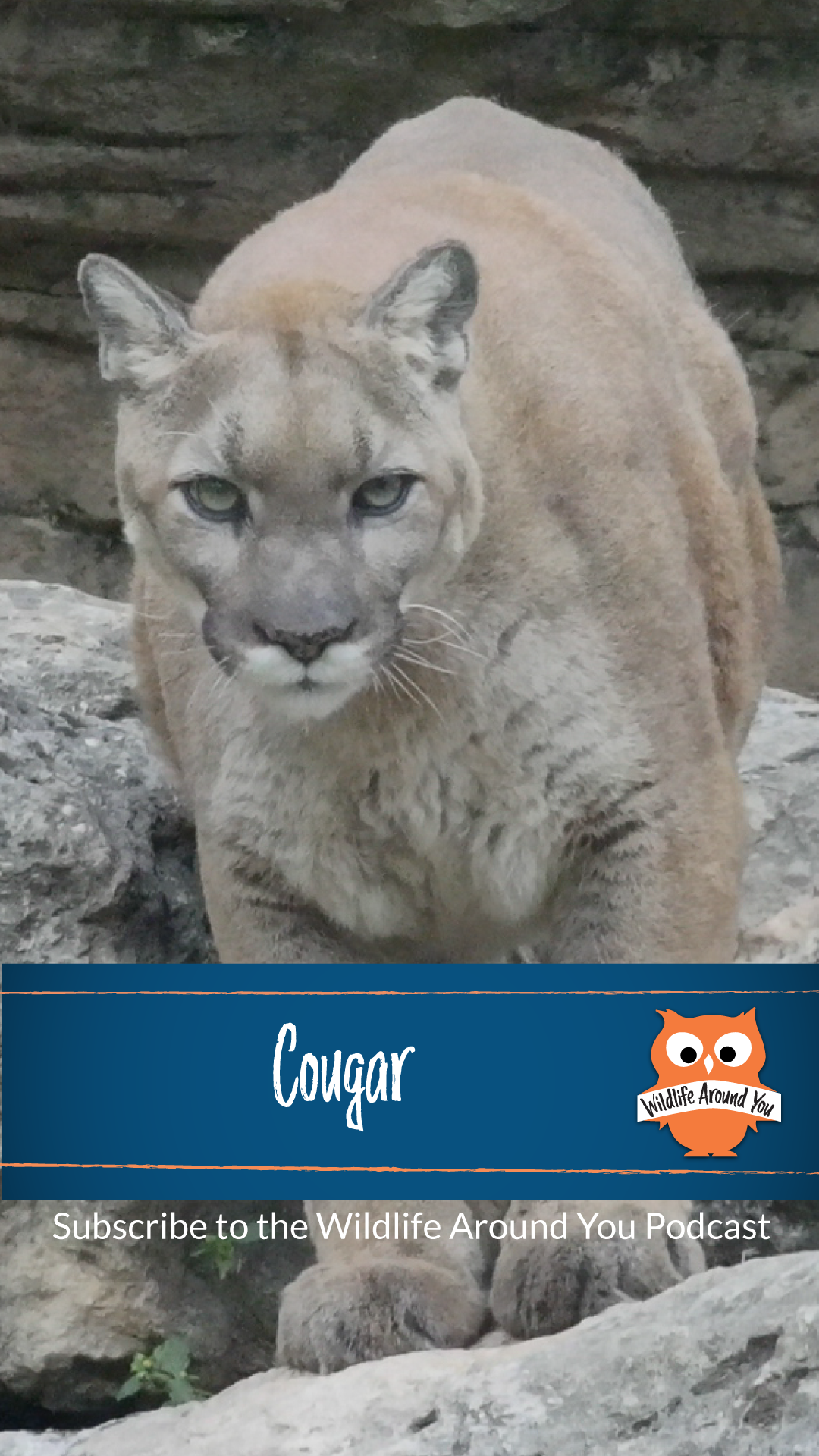Identification:
- The cougar, or mountain lion, is a large, solitary cat with a tan or light brown coat.
- They have a long tail that is almost as long as their body and head combined.
- Their paws are large and rounded, with retractable claws that they use for gripping prey.
- Cougars can weigh up to 150 pounds and grow up to 8 feet in length, including their tail.
- They have a distinctive facial profile with a broad forehead and strong jaw.
Habitat:
- Cougars are found throughout North and South America, from Canada to Argentina. They have the largest range of any large wild terrestrial mammal in the western hemisphere.
- They prefer habitats with dense underbrush and rocky areas for cover, but can also be found in forests and grasslands.
- They are most commonly found in the western United States, certain parts of Florida and then most of South America.
Behavior:
- Cougars are solitary and territorial animals. They live in home ranges that vary in size from 30-125 square miles
- They are most active at dawn and dusk, and often hunt alone.
- Cougars can jump up to 18 feet in a single leap.
-
Home Building:
- Cougars do not build permanent homes, but will use dens for raising young.
- They will use natural cavities in rocks or trees, or dig their own dens in soft soil.
- Females will sometimes share dens with their offspring, but males are solitary.
Offspring:
- Females give birth to litters of 1-4 cubs, which are born blind and helpless. Their coats are spotted until they are about 6 months old. The spots help camouflage them on the ground.
- Cubs stay with their mother for up to 2 years before becoming independent.
- Male cougars do not play a role in raising their offspring.
- In the wild a healthy cougar could live up to 10 years.
Diet:
- Cougars are carnivorous, and primarily eat deer and other ungulates.
- They will also eat smaller mammals like rabbits, rodents, and coyotes.
- They have a poor sense of smell, but very keen eyes and ears. They are stealthy hunters, and will stalk prey before pouncing on them.
- They are known for their ability to climb trees, and will sometimes drag their prey up into a tree to eat.
- They may only eat once or twice a week.
Predators:
- Cougars have no natural predators, but may occasionally compete with other predators like wolves or bears.
- Humans are the biggest threat to cougars, as they are often hunted for sport or to protect livestock.
Fun Facts:
- Cougars are the second largest cat species in North America, behind the jaguar.
- It holds the Guinness record for the animal with the highest number of names. (40 english names)They are also known as pumas, panthers, or mountain lions. All of these names came from different regions where it is found. Early spanish explorers call it “leon” or “gato monte” which is lion or cat of the mountin which is where Mountain Lion came from. Cougar came from an old South American Indian word “cuguar” Puma is the name the Incas gave the cat in their language, and panther is a general term for cats that have a solid-colored coat.
- Cougars have a wide range of vocalizations, including growls, hisses, and screams. Unlike other big cats, they purr instead of roar.
- They are considered a symbol of power and grace in Native American culture.
- Cougars can run up to 35-45 miles per hour and swim across rivers and lakes.
- The ancient Inca city of Cuzco was designed to be the shape of a cougar.

